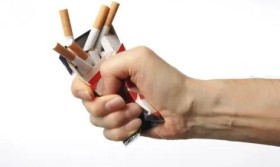A Guide to Selecting a Safe Vape Juice Brand
The world of vaping can be a labyrinth for both newcomers and experienced users, with a seemingly endless array of vape juice brands promising the most flavorful and satisfying experience. However, amidst the vibrant packaging and enticing descriptions, a critical factor must take precedence above all else: safety. The quality and composition of the e-liquid you inhale directly impact your health. Therefore, learning how to navigate the market and choose a reputable vape juice brand is not just a matter of preference, but a fundamental aspect of responsible vaping. This guide will provide a comprehensive framework for evaluating brands based on safety, transparency, and quality.
Understanding the Ingredients: The Foundation of Safety
Before assessing any brand, it is essential to understand what constitutes a safe e-liquid. The primary ingredients are Propylene Glycol (PG), Vegetable Glycerin (VG), flavorings, and optionally, nicotine. The safety concern lies not with PG and VG themselves—both are widely used in food, pharmaceutical, and cosmetic products and are generally recognized as safe for ingestion by authorities like the FDA—but with the purity of these ingredients and the nature of the flavor compounds when they are heated and inhaled.
-
PG/VG Quality: Low-quality PG and VG can contain impurities. Reputable brands use USP (United States Pharmacopeia) or EP (European Pharmacopoeia) grade ingredients. This certification ensures a high level of purity, meaning the base liquids are free from harmful contaminants.
-
The Flavoring Conundrum: This is the most complex area of vape juice safety. Many flavorings are labeled "generally recognized as safe" (GRAS) for consumption, but this designation does not automatically apply to inhalation. When heated, some compounds can decompose into potentially harmful chemicals. A responsible brand invests in research and development to use flavorings that are safer for inhalation, often sourcing from reputable flavor houses that provide material safety data sheets (MSDS).
-
Nicotine Purity: The nicotine used should be of high purity. Impure nicotine can have a harsh, peppery taste and may contain undesirable contaminants. Brands that prioritize safety will use pharmaceutical-grade nicotine, which is thoroughly refined.

Key Criteria for Evaluating a Vape Juice Brand
With this foundational knowledge, you can now apply a set of criteria to any brand to gauge its commitment to safety.
1. Transparency and Openness A brand that has nothing to hide will be transparent about its processes. Look for brands that readily provide detailed information.
- Ingredient Listings: The brand should clearly list all ingredients used in its e-liquids. Vague terms like "natural and artificial flavors" are common, but the best brands go further, sometimes explaining their sourcing or the types of flavorings they avoid (e.g., diacetyl, acetyl propionyl, and acetoin).
- Laboratory Testing (The Most Important Factor): This is non-negotiable for safety. Independent, third-party laboratory testing is the gold standard. These tests should be readily accessible to consumers, often via a scannable QR code on the bottle or a searchable batch number on the company’s website. Key tests to look for include:
- Purity/Potency Analysis: Confirms the stated levels of nicotine, PG, and VG.
- Heavy Metal Screening: Tests for the presence of metals like lead, arsenic, and mercury that could leach from the device’s coil into the e-liquid.
- Harmful Chemical Analysis: Screens for specific harmful compounds such as diacetyl, acetyl propionyl, acetoin, and formaldehyde.
2. Manufacturing Standards and Hygiene The environment in which e-liquid is mixed and bottled is critical to preventing contamination.
- Cleanroom Facility: The ideal manufacturing setting is an ISO-certified cleanroom. This is a controlled environment with strict protocols for air filtration, temperature, and hygiene to ensure the product is mixed in a sterile setting, free from dust, bacteria, and other particulates.
- Child-Resistant Packaging: This is a basic but vital safety feature, especially for households with children or pets. Bottles should be difficult for children to open, complying with safety regulations like the Child Nicotine Poisoning Prevention Act in the US.
3. Brand Reputation and Community Standing A brand’s history and standing within the vaping community can be very telling.
- Longevity and Reviews: Established brands with a long track record often have a reputation to uphold. Research online reviews, forum discussions, and feedback from other vapers. While individual tastes vary, consistent reports of negative physical reactions or concerns about quality should be major red flags.
- Regulatory Compliance: Responsible brands proactively comply with regulations in the markets they serve, such as submitting ingredient listings to health authorities (e.g., the FDA's PMTA process in the United States). While compliance does not guarantee absolute safety, it demonstrates a commitment to operating within a legal and accountable framework.
4. Clarity in Communication Pay attention to how the brand communicates with its customers.
- Avoidance of Outlandish Claims: Be wary of brands that make unsubstantiated health claims, such as marketing their products as a "healthy" alternative or a "smoking cessation" device without proper authorization. A safe brand focuses on quality and experience, not medical promises it cannot keep.
- Clear Contact Information: A legitimate company will provide easy ways to contact them for customer service inquiries. This openness builds trust.
Red Flags: What to Avoid
Equally important is recognizing the warning signs of a brand to avoid.
- No Lab Results: If a brand cannot or will not provide independent lab reports, do not purchase their products. This is the biggest red flag.
- Unbelievably Low Prices: Extremely cheap e-liquids are often a sign of corner-cutting. High-quality, pure ingredients and independent lab testing cost money. If the price seems too good to be true, it probably is.
- Vague or Missing Ingredient Information: A lack of transparency about what is in the bottle is a clear sign of a non-trustworthy brand.
- Copycat or "Knock-off" Brands: Avoid brands that mimic the packaging of popular brands but lack the same quality controls. These are often produced with little regard for safety.
Making an Informed Decision
Choosing a safe vape juice brand requires a shift from being a passive consumer to an informed one. It involves a small amount of research that pays significant dividends for your well-being. Start by identifying a few brands that interest you, then visit their websites. Look for their manufacturing philosophy, ingredient sourcing, and most importantly, their laboratory test results. Compare this information against the criteria outlined above.
Prioritizing safety may mean spending a little more money or forgoing a trendy flavor from an unknown source. However, the peace of mind that comes from knowing you are inhaling a product made with purity, transparency, and rigorous testing as its core principles is invaluable. Your vaping experience should be defined by enjoyment and choice, not compromised by uncertainty about what you are consuming. By taking these steps, you empower yourself to make a choice that respects your health.











